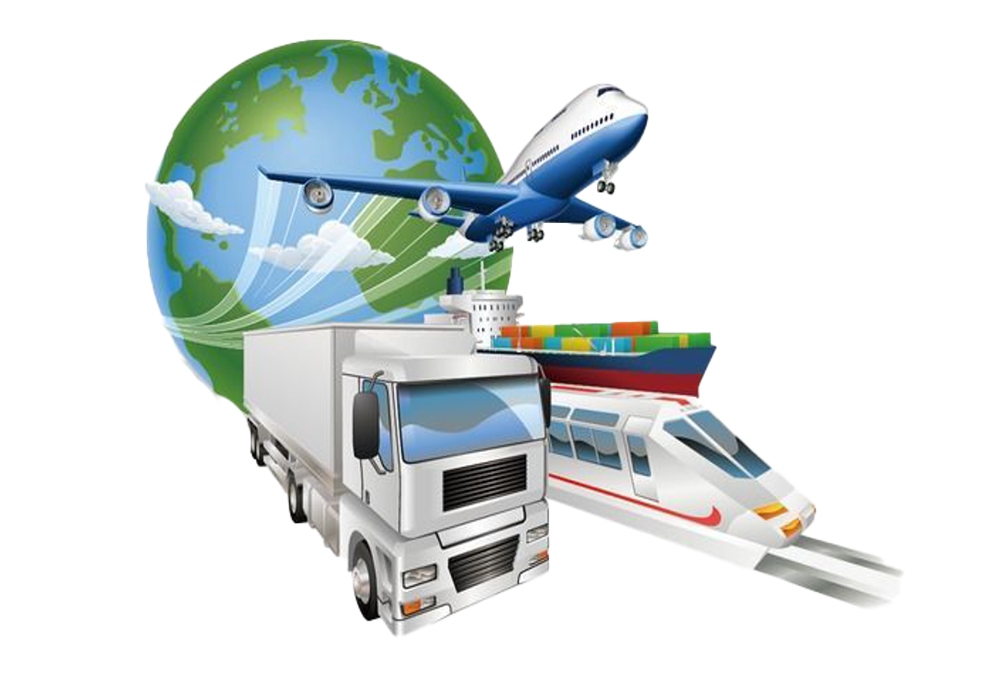News and Articles
Choose the Right Mode of Transportation for Your Cargo!

What is Mode of Transportation?
Modes of transportation refer to the various ways of moving goods or people from one location to another by utilizing different infrastructure and operational procedures. In the logistics industry, there are four main modes of transport: Air freight, Sea freight, Road Transport, and Railways. Which method you use will depend on what you’re shipping, where you’re shipping from, and where you’re shipping to.
Top 4 Modes of Transport
1. Air freight
Air freight is a critical mode of transportation in the world of logistics and global trade, as it offers the best choice for speedy delivery. It's accessible worldwide and provides a convenient method for moving smaller shipments over long distances. This mode of transport is popular for several reasons, making it an essential choice for businesses with time-sensitive shipments such as Medication, Cosmetics, Luxury goods, Jewelry, Hardware, and More. However, it is not suitable for low-value items, oversized products, and those with big volumes since Air freight is one of the most expensive transport methods compared to other types of transport.
2. Sea Freight
Sea freight primarily involves the use of shipping containers, which are mostly for international shipping, and it is the most popular mode of transport in the global trade industry. More than 90% of all goods are transported by vessels. Due to its cost-effectiveness, most businesses prefer to use this mode of transportation when they need to move a large volume of goods or heavy goods such as Motor vehicles, Machinery, Industrial Parts, Construction Materials, Food, and More.
Generally, container shipping is divided into two types as follows.
- Full Container Load (FCL) refers to a shipment in which the full container is loaded with cargo owned by the shipper. The container space is not shared with any other cargo. While the container may not always be fully loaded, the rate is charged based on a full container. FCL is the standard shipping method for large cargo and is one of the most cost-effective options for international shipping, especially for shipments with a volume of more than 13 m³. There are two main types of containers used in sea freight which are Dry containers (20GP, 40GP, 40HC) for general cargo and Reefer containers (20RF and 40RF) for transporting perishable goods.
- Less than Container Load (LCL) refers to a shipment with small volumes or dimensions that don't occupy the full container space. Multiple smaller cargoes from different shippers are consolidated and shipped together in the same container.
3. Road Transport
Road transport or trucking is a popular choice for short-distance haulage as a cost-effective and speedy transportation option. It is the primary mode of transportation for cross-border freight and for delivering goods directly to customers' doorsteps (Door-to-Door Service). For example, in countries like Malaysia and Thailand or Laos and Thailand, road transport is commonly used and can also be combined with other transportation methods.
4. Rail transport
Rail transport or trains is a vital part of logistics routes across the globe, particularly in Europe and North America, where rail networks are comprehensive. In North America, for instance, rail transport accounts for approximately 15% of all cargo transportation. Currently, there have been developments in Asian railway networks, including high-speed rail lines like the China-Laos route. This railway line transports over a million passengers and more than half a million tons of cargo, with a substantial portion being cross-border freight. It’s the ideal choice for organizations requiring fast, reliable, cost-effective cargo transportation, and it is trusted in areas of the world where rail networks are strong.
Credit: https://wearedg.com/news/article/modes-of-transport-logistics
Choosing the right transportation method for product delivery is crucial in managing a business efficiently, whether transporting goods domestically or internationally.
5 Factors to Consider When Choosing the Most Suitable Mode of Transport
1) Cost of Transport:
When choosing the best method for importing or exporting products, your budget is the most important factor. Costs can vary depending on the type and quantity of goods to be transported, and it's essential to consider that transportation costs will impact the overall cost of the goods.
2) Reliability and Regularity of Service:
The choice of transport mode is influenced by the desired speed of goods delivery. Road, Ocean, and Air transport can be impacted by adverse weather conditions like heavy rains, snow, fog, and storms, potentially causing delays.
3) Safety:
Safety and security of goods in transit also influence the choice of transport mode. Road Transport by truck may be preferred to railway transport due to the generally lower risk of losses. Ocean transport exposes goods to the perils of the sea. Therefore, from a safety standpoint, ocean transport is the riskiest. Furthermore, to protect goods during transportation, it is advisable to use appropriate packaging. Some goods may require special packaging or delivery conditions, such as refrigeration equipment or security measures, and these factors must be taken into consideration.
4) Characteristics of goods
The size and weight of goods also play a role in defining the appropriate mode of transport. Road and air transport are generally suitable for light and small shipments, while rail and ocean transport are more suitable for heavy shipments. The choice of transport mode may also depend on how dangerous, fragile, or valuable the products are. Air transport is typically the preferred option for transporting fragile or high-value products.
5) More considerations:
Other factors to keep in mind:
The terms of the export sales contract, for example, the buyer may request the use of specific transport modes.
The location of the seller and the buyer is close to airports, seaports, and railway stations.
The facilities at the port of destination such as bulk handling or container handling equipment.
Credit: https://tradelogistics.co.za/factors-to-consider-when-choosing-the-most-suitable-mode-of-transport
CRL Import Team








